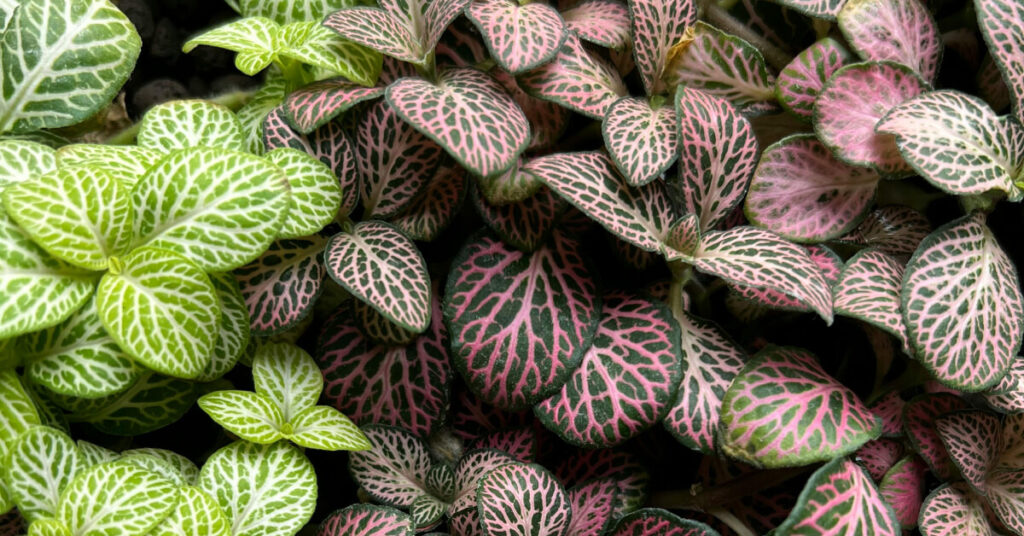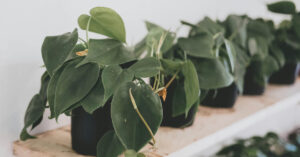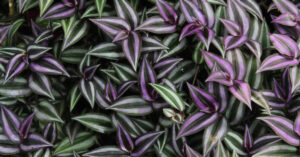Fittonia albivenis
Nerve Plant is a compact tropical houseplant admired for its bold, veined foliage that appears in striking patterns of white, pink, or red against dark green leaves. Native to the rainforests of South America, this low-growing plant thrives in warm, humid conditions and brings a splash of color to shelves, desktops, and terrariums.
Its dramatic leaf patterns and tidy size make it a favorite among plant collectors, especially those looking to fill smaller spaces or add variety to high-humidity groupings.
Light Requirements
Nerve Plant grows best in bright indirect light to partial shade. It tolerates lower light conditions but will lose vibrancy and grow more slowly without enough brightness.
Avoid direct sun, which can scorch the delicate leaves. In very low light, the plant may become leggy and prone to leaf drop.
Watering
Keep the soil consistently moist but not soggy. Nerve Plant is sensitive to both underwatering and overwatering. It may wilt dramatically if allowed to dry out, but it usually recovers quickly after watering.
Water thoroughly when the top half-inch of soil feels dry. In warm months, this may mean watering every few days, especially in smaller pots.
Soil Type
Use a well-draining, peat-based potting mix with added perlite or coco coir. The soil should retain moisture without becoming compacted or saturated.
Good drainage is essential to prevent root rot, especially since the plant requires frequent watering.
Temperature
Maintain indoor temperatures between 65 and 80°F (18 to 27°C). Nerve Plant is sensitive to cold air and sudden temperature changes. Avoid placing it near drafts, air conditioners, or heaters.
Temperatures below 60°F (16°C) may cause stunted growth or leaf drop.
Humidity
Nerve Plant thrives in high humidity. If the air is too dry, leaf edges may brown, and the plant may become prone to wilting. Ideal humidity is around 60 percent or higher.
Ways to maintain humidity:
-
Use a humidifier nearby
-
Keep the plant in a bathroom or kitchen
-
Place on a pebble tray with water
-
Grow in a closed or partially closed terrarium
Misting can help temporarily but is not as effective as ambient humidity control.
Fertilizing
Feed once a month during spring and summer with a balanced liquid fertilizer diluted to half strength. Reduce or stop feeding in fall and winter when growth slows.
Avoid over-fertilizing, as this can cause leaf tip burn or fading of the vibrant vein color.
Growth Habit and Pruning
Nerve Plant is a low, spreading plant that typically stays under 6 inches tall but may spread out horizontally. Its compact growth makes it ideal for tight spaces or grouped displays.
Pinch back stems occasionally to encourage fuller growth and prevent legginess. Removing spent or yellowing leaves also helps maintain a neat appearance.
Repotting
Repot every 1 to 2 years or when the plant becomes root-bound. Choose a small pot with drainage holes and refresh the soil during repotting to maintain moisture balance.
Repot in early spring before new growth begins.
Propagation
Nerve Plant is easy to propagate through stem cuttings. The best time to propagate is during spring or early summer.
Steps for propagation:
-
Take a 3- to 5-inch cutting just below a node
-
Remove lower leaves
-
Place the cutting in water or moist soil
-
Keep in bright, indirect light
-
Transplant once roots are a few inches long
The plant roots quickly and easily when humidity is kept high.
Common Problems and Solutions
Dramatic wilting
Caused by underwatering. Water thoroughly and the plant should bounce back quickly.
Leaf curl or brown edges
Typically due to low humidity. Move the plant to a more humid location or add a humidifier.
Yellow leaves
May result from overwatering or poor drainage. Let the soil dry more between waterings and improve aeration.
Leggy growth
Caused by low light or lack of pruning. Move to a brighter location and pinch back stems regularly.
Pest issues
Occasionally affected by fungus gnats or aphids. Improve air circulation and treat with insecticidal soap if needed.
Pet and Child Safety
Nerve Plant is non-toxic to cats, dogs, and humans. It is safe for homes with pets and children, making it a great option for mixed indoor environments.
Popular Varieties
Nerve Plants are often sold by their leaf vein color. Common cultivars include:
-
‘Red Anne’ – Green leaves with red veins
-
‘White Star’ – White veins and deep green leaves
-
‘Pink Angel’ – Bright pink veins on soft green foliage
-
‘Frankie’ – Compact form with bold red and pink variegation
All varieties share the same care requirements and offer a colorful addition to any plant display.
Why Nerve Plant Adds Color to Small Spaces
Nerve Plant is a standout choice for anyone seeking bold foliage in a small, manageable plant. Its striking vein patterns bring texture and interest to otherwise green collections, and its compact size makes it ideal for shelves, desktops, and terrariums.
While it requires a bit more attention to humidity and watering, it rewards care with lasting color and a unique tropical character that fits easily into almost any space.




